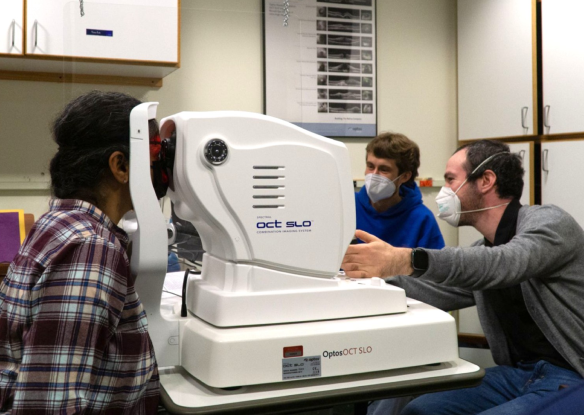

- Principal Investigator:
- Natela Shanidze
This project is focused on investigating sources of error and potential improvement methodologies for head-free eye tracking, particularly in individuals with known oculomotor deficits


This project is focused on investigating sources of error and potential improvement methodologies for head-free eye tracking, particularly in individuals with known oculomotor deficits
If you are interested in vision science or want to learn more about low vision and blindness, there are many opportunities to get involved at The Smith-Kettlewell Eye Research Institute.
